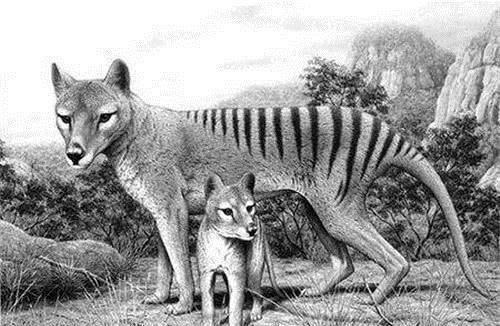The word extinction, I believe everyone is not unfamiliar. Since humanity realized the importance of animal protection, 110 species of mammals and 139 species of birds have been extinct around the world, which is a shocking number and a witness to the destruction of the natural environment by humans.

Of course, this is the extinction of animals, but have you heard that people of certain ethnic groups in the world have also suffered from "species extinction"? Moreover, the age of this extinct human race is not far away, just over 100 years ago in the 19th century.
The story begins with Tasmania, Australia's only island state, which the British landed in 1790 and turned it into a British colony in 1825. Indigenous people living on the island of Tasmania have also suffered. At first, they lived in a relatively primitive tribal life, and before the arrival of the British colonists, their population size even reached 6,000 people.
It was also because of the arrival of British colonists that in just a decade, the number of indigenous people in Tasmania began to decline sharply. By 1835, for 10 years, there were only about 200 Tasmanian aborigines left.
Colonization means violence, in order to compete for natural resources, Western colonists launched attacks on the indigenous people, and these Tasmanian aborigines only have weapons, such as bows and stones in their hands, far less powerful than shotguns, because of their inability to fight, Tasmania soon became a colonist's paradise.
Eventually, in order to avoid the crisis of extinction, the surviving Tasmanian natives tried to negotiate with the colonists, which resulted in them having to leave their homeland for Flinders Island. One of them, a Tasmanian woman named Truganini, has been coordinating with the two sides, and she has become the last Tasmani native in the world.
The woman is the daughter of a tribal chieftain on bruny island in southern Tasmania, which is equivalent to the "princess" of the tribe. Truganini was married twice in his lifetime, and Woolridy was his first husband. After George Arthur occupied Tasmania, Truganini and her husband began working as language teachers and guides for Robinson, the Indigenous Conservation Officer.
At the time, George Arthur's management method was to reward people for hunting down the indigenous people in order to reduce the resistance of the indigenous people. Robinson was the executor of this policy, and since he did not speak the Tasmanian language, Truganini acted as a translator. In order to keep as many natives alive as possible, Truganini often consciously or unconsciously led Robinson to let the natives live.
However, even though Robinson did not take the initiative, the remaining 100 indigenous people, including truganini and his wife, were transferred to Flinders Island, but they began to die in large numbers due to disease or conflicts with whalers. Even Truganini's husband died, and she was forced to marry another native, William.
Unfortunately, Truganini and William's lives were not happy, because their Tasmanian aborigines were constantly under the surveillance of the colonists. In 1871, her second husband, William, died, and after his death, he was dissected by the colonists for an exhibition, and Truganini witnessed this scene and felt heartache. Five years later, she also died. Before dying, she specifically begged Robinson not to let the same thing happen to her.
And where could the self-interested British colonists listen to her? In defiance of Truganini's request to scatter his ashes into the sea after his death, they buried him in a wilderness. Even in the second year after her death, her body was exhumed and placed in a museum for free viewing for 72 years. Poor Truganini, who worked for the British colonists all his life, and finally the corpse was reduced to their exhibits, which showed the madness of the British colonists.
Truganini was the last Tasmanian native, and after her death, this civilization disappeared completely from the earth. A hundred years later, historians who want to study them will not be able to find out. In fact, not only the indigenous Tasmanians, but also the Aztec civilization on the American continent were destroyed by the Spaniards in the same way.
From this point of view, the colonial powers of modern times are simply a cancer of human civilization. Dear readers, what do you think?